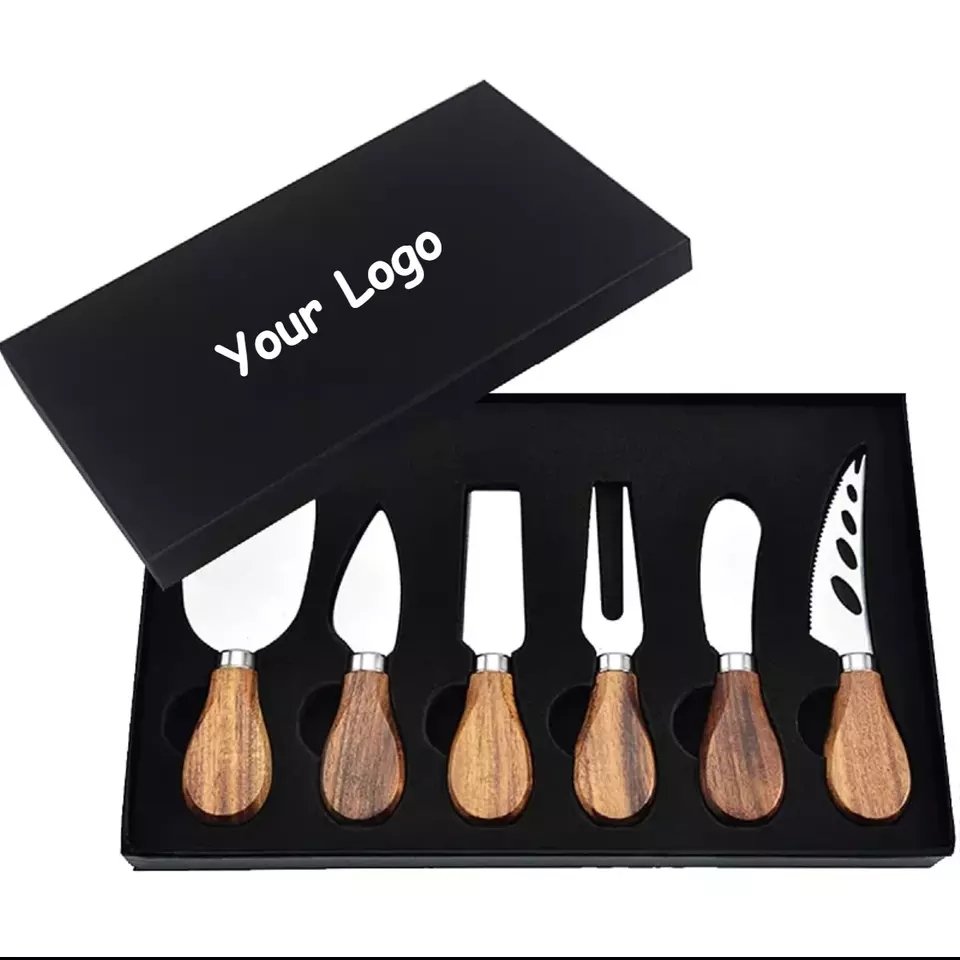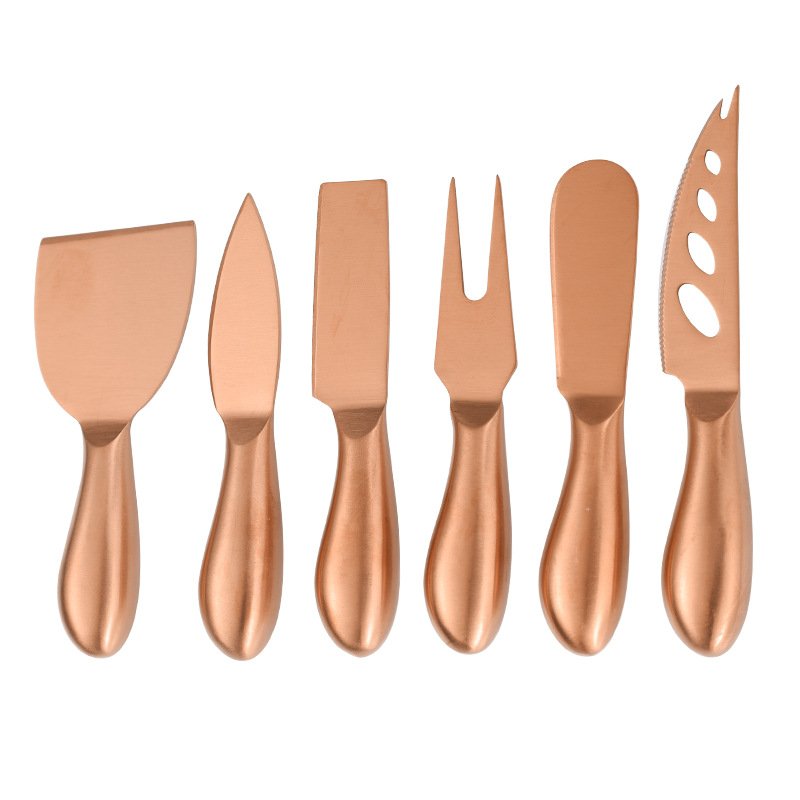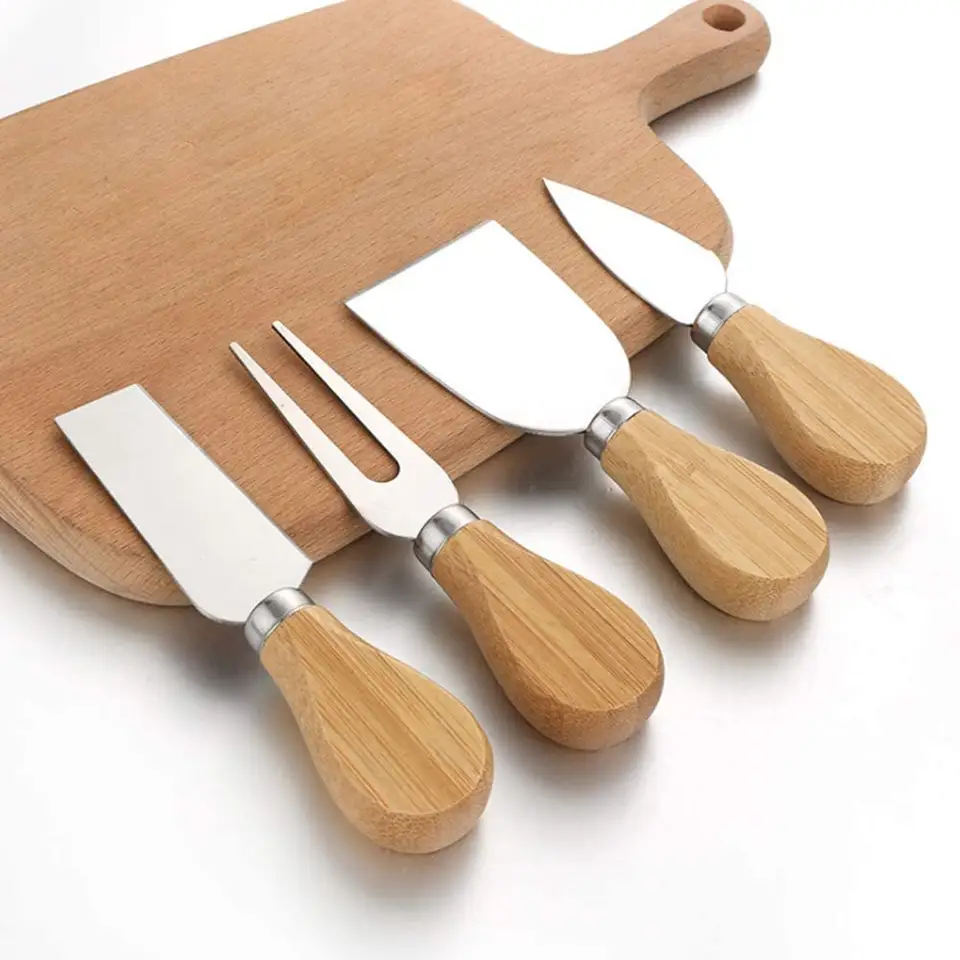I often get asked: can I find great cheese knives nearby? I was in your shoes once. I scanned every store, hoping to score the right blade. The chase felt endless.
Finding the perfect cheese knife locally helps you enjoy each slice right away, without waiting weeks for shipping.
I get why you want to hunt local shops. You want hands-on feel. You want to inspect the blade. You want to support nearby businesses. Stick with me and you’ll learn how to find, choose, and love your cheese knife, right in your neighborhood.
Table of Contents
The cheese knife?
I remember my first cheese knife. It was dull. It bent under pressure. I regretted the buy instantly.
A cheese knife is a tool built to cut through soft and hard cheeses cleanly, preserving shape and texture.
Why a Dedicated Knife?
Regular knives can mash and crumble cheese. A cheese knife has a special shape. It reduces sticking. It creates clean cuts.
| Feature | Benefit |
|---|---|
| Thin blade | Less friction and sticking |
| Holes or perforations | Stops cheese from clinging to the blade |
| Forked tip | Serves cheese pieces easily |
Cheese knives come in many shapes. Some have a narrow blade. Some have a wide wedge. Each design aims to cut specific cheese textures. Soft cheeses need thin blades. Hard cheeses need sturdy blades.
The Anatomy of a Cheese Knife
1. Blade thickness: Thinner blades slice softer cheese. Thicker blades handle harder cheeses.
2. Blade shape: Wedge shapes break through firm cheese. Curved blades scoop soft cheese.
3. Handle design: Ergonomic handles reduce wrist strain during repeated cuts.
4. Holes/perforations: Reduce sticking by creating air pockets.
5. Forked tips: Allow you to pick up slices after cutting.
When you look for a cheese knife near you, inspect these elements. Feel the blade. Check for wobble. Grip the handle. A well-balanced knife makes a world of difference.

What type of knife is best for cutting cheese?
I once tried using a bread knife for cheese. It worked but left ragged edges. I felt it lacked precision.
The best cheese knife depends on the cheese type: soft, semi-soft, semi-hard, or hard.
Cheese falls into categories by texture. Each demands a matching blade:
| Cheese Type | Knife Type | Key Feature |
|---|---|---|
| Soft (Brie) | Thin blade with holes | Keeps cheese from sticking |
| Semi-soft | Wide, flat blade | Supports cheese mass |
| Semi-hard | Wedge knife | Strong edge to break chunks |
| Hard (Parmesan) | Parmesan chisel/picker | Heavy-duty tip to chip hard bits |
Soft cheeses hold moisture. They cling to solid surfaces. A perforated blade helps release them. Semi-soft cheeses, like Gouda, need a flat blade for even slices. Semi-hard cheeses, like cheddar, benefit from wedge shapes to break through. Hard cheeses, like Parmesan, require chisels or picks.
Why Matching Knife Matters
– Preserves cheese integrity: You avoid crumbling or tearing.
– Reduces wastage: Cleaner cuts lead to fewer scraps.
– Enhances presentation: Uniform slices look professional on a platter.
Weighing Versatility vs. Specialization
Some knives aim to be all-rounders. They have durable, medium-thickness blades. They work fairly well on many cheeses. Yet, they sacrifice peak performance. Specialized knives excel at one task. If you entertain often, a full set may be worth the investment. If you cut cheese occasionally, a versatile model suffices.
A local cutlery shop might offer test cuts. Ask if you can try slicing samples. Feel how the blade glides. Notice how little force you need. This hands-on trial beats online reviews.
Are cheese knives worth it?
I used to think any sharp blade sufficed. Then I tried a proper cheese knife set. The difference blew me away.
Cheese knives are worth it if you care about slice quality, food presentation, and ease of use.
Cost vs. Benefit Analysis
| Factor | Standard Knife | Cheese Knife |
|---|---|---|
| Initial cost | Low ($10–$20) | Medium ($20–$60) |
| Slice quality | Fair | Excellent |
| Food waste | Higher | Lower |
| Presentation | Basic | Professional |
| Durability | Variable | Often higher |
Investing $30–$50 in a cheese knife set can pay off if you host gatherings. Lower waste means more servings. Professional slices impress guests.
Ergonomics and Comfort
A cheese knife’s handle often fits your grip better. Repeated cuts feel easier. Less strain means you slice more, worry less about hand fatigue.
Longevity and Maintenance
High-quality steel resists corrosion. Sharpness holds longer. Proper care—hand-wash and dry—keeps blades in top shape. Cheaper knives dull quickly and may bend.
What is another name for a cheese knife?
I once asked a store clerk for a “fromage knife.” He understood instantly.
Cheese knives are also called fromage knives, cheese slicers, or cheese cutters, depending on region and design.
| Term | Usage Context |
|---|---|
| Fromage knife | French-inspired terminology |
| Cheese cutter | Broad term, any cutting tool |
| Cheese slicer | Often refers to plane slicer |
| Parmesan chisel | Heavy-duty hard cheese tool |
| Spade knife | Small pick for hard cheese |
Regional Variations
In Europe, sellers often use “fromage knife.” In the U.S., “cheese slicer” may refer to a plane that peels thin slices like a mandoline. Nordic countries favor the wire slicer. Recognizing local terms helps when you search near you.
How to cut cheese without a cheese knife?
Once, I hosted a party and forgot my cheese knife. Panic struck.
You can use a thin wire, dental floss, or a sharp chef’s knife in a pinch to slice cheese.
| Method | Pros | Cons |
|---|---|---|
| Kitchen twine/wire | Clean cuts for soft cheese | Less control on hard cheese |
| Clean dental floss | Easy for soft cheeses | Not reusable, sanitary concerns |
| Sharp chef’s knife | Versatile and on-hand | High friction on sticky cheeses |
| Vegetable peeler | Thin, even slices for semi-soft | Not suited for hard cheeses |
Safety and Hygiene
Always ensure floss or twine is food-safe and unused. Rinse before use. With chef’s knives, maintain a clean board to reduce slipping.
Technique Tips
– Wire/Floss: Pull taut and slice in one smooth motion.
– Chef’s Knife: Chill cheese for firmer texture. Use a gentle rocking motion.
Should a cheese knife be serrated?
I once bought a serrated cheese knife. It worked well on crusty breads but underwhelmed with cheese.
Serrated edges can help with rind or aged cheeses, but are not ideal for smooth cuts on soft and semi-soft cheeses.
| Cheese Type | Serrated Knife | Smooth Blade |
|---|---|---|
| Soft (Camembert) | Little benefit | Best |
| Semi-soft | Good for rind | Good |
| Semi-hard | Acceptable | Better for clean cuts |
| Hard | Not recommended | Use wedge or chisel |
When to Choose Serration
– Hard Rinds: Serrations grip and saw through tough exterior.
– Mixed Platters: If you cut bread and cheese with one tool.
Drawbacks
Serrations tear soft cheese. They leave jagged edges and can crush delicate crumb structures.
Should you sharpen a cheese knife?
I asked a pro: “Cheese knives need sharpening?” He said yes, but less often than other blades.
You should sharpen cheese knives, especially those used on hard cheeses, about every 6–12 months, depending on frequency of use.
| Usage Frequency | Sharpening Interval |
|---|---|
| Occasional | Annually |
| Regular household | Twice a year |
| Professional use | Quarterly |
Sharpening Soft-steel vs. Hardened-steel Knives
– Soft-steel: Dulls faster, needs more frequent honing and sharpening.
– Hardened-steel: Holds edge longer, but requires proper tools to sharpen.
Honing vs. Sharpening
– Honing: Realigns edge. Do before each use.
– Sharpening: Removes metal to form new edge. Use whetstone or professional service.
Why do cheese knifes have holes?
I built a knife set with holes as a learning project. I learned why they matter.
Holes reduce surface area, minimizing cheese adhesion to the blade for cleaner cuts.
Physics of Sticking
When cheese meets metal, moisture and proteins bond. Holes break the surface contact. Air pockets form and reduce friction.
| Benefit | Explanation |
|---|---|
| Cleaner cuts | Less residue on blade |
| Easier cleaning | Rinse fewer stuck bits |
| Reduced waste | More cheese on plate, less on knife |
Design Considerations
Holes must be sized right. Too large and structural integrity weakens. Too small and they don’t trap enough air.

Cheese knife set nz?
When I moved to New Zealand, I searched for local sets. I found quality brands in artisan shops.
A cheese knife set in NZ typically includes a soft cheese knife, a hard cheese knife, a cleaver, and a spreader.
| Component | Use |
|---|---|
| Soft cheese knife | Thin, perforated blade for brie, camembert |
| Hard cheese knife | Sturdy wedge for cheddar, gouda |
| Cleaver/plane | Cubes and thin slices |
| Spreader | Soft cheese and spreads |
Where to Buy in NZ
– Specialty stores: Look for kitchen boutiques in Auckland.
– Farmers’ markets: Local artisans often showcase handcrafted sets.
– Online NZ retailers: Support local shipping and warranty.
Marketing Tip (Brilliant)
As a supplier, I recommend building partnerships with boutique retailers. Offer demo workshops to let customers test blades. They buy when they feel the quality.
Cheese knife guide?
I wrote a guide to help suppliers and retailers showcase knife features effectively.
A cheese knife guide helps customers understand blade anatomy, care tips, and matching knives to cheese types.
| Section | Description |
|---|---|
| Blade types | Overview of soft, semi-hard, and hard knives |
| Care instructions | Cleaning, honing, and storage |
| Matching to cheese | Pairing knives with cheese categories |
| Presentation tips | Plating suggestions and slice aesthetics |
Creating Effective Guides
1. Use clear images highlighting each knife feature.
2. Provide comparison tables like above.
3. Include local store finder tools for “near me” searches.
4. Offer video demos for best blade use.
Finding the right cheese knife nearby transforms your slicing. Try local shops, test blades, and slice happily.



